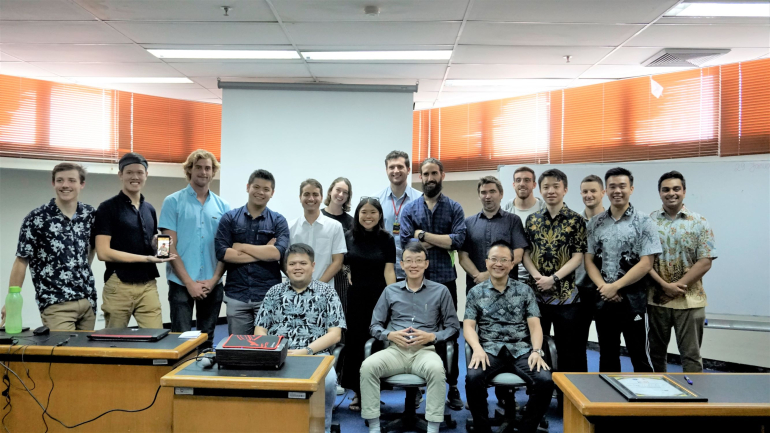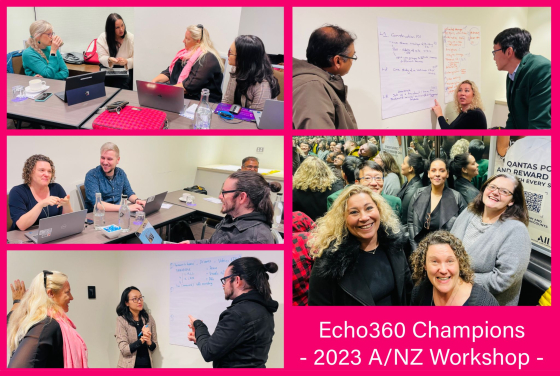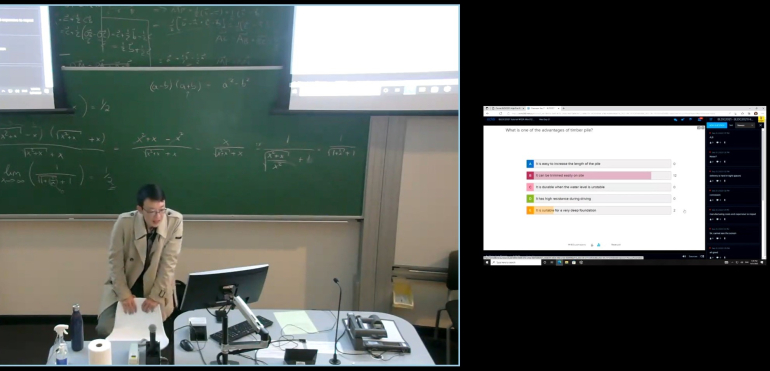By A/Prof. Riza Yosia Sunindijo, UNSW Built Environment
Published 19 May 2023
Driven by the goal of providing flexibility and an engaging learning experience, A/Prof. Riza Yosia Sunindijo was successful in securing the EchoImpact Grant. With its support, he will explore the correlation between his students' performance and their engagement with Echo360 functions, aiming to tailor support for different student groups to ensure equitable and inclusive learning.
What is the EchoImpact Grant?
The EchoImpact Grant supports innovative instructors and researchers currently using any Echo360 solution, such as EchoVideo, EchoPoll, EchoAuthor, or EchoExam, to elevate instructional practices to improve student outcomes.
Grant applications are assessed based on 3Es, comprising equity, engagement and evidence. Equity refers to how applicants demonstrate that all learners are afforded equal opportunity to engage and excel regardless of environment, access, and ability. The engagement dimension advocates the active participation of leaners, which leads to better learning outcomes. Evidence is about a commitment to measuring progress and outcomes empirically.
Along with a $3000 fund, this grant provides recipients with opportunities to participate in a face-to-face workshop with the Echo360 team and other grant recipients (held in Melbourne on 2-3 May 2023), participate in monthly online workshops with the Champions support network, and present findings at an Echo360 A/NZ Community Conference in 2024 (will be held in Sydney).
Which areas of your teaching will you be exploring? How will this impact the student experience?
I will be teaching a core course called High-rise Building Construction, which is part of the Construction Management and Property program. Usually there are more than 150 students enrolled in this course. The majority of the students also work in the construction industry, which is the norm for students studying this degree, and they highly appreciate flexibility in their learning, allowing them to balance their work and study demands. Therefore, it is important for me to provide such flexibility in my teaching, while also delivering an engaging learning experience.
Building on what I have done previously, I will do an in-depth analysis to correlate students’ engagement with various Echo360 functions, such as live streaming, recording, and polling activities, and Moodle resources, and their performance in online quizzes and final exam. Students will also be grouped based on their gender and residency status, i.e., local or international, to understand the impact of their engagement preferences on their performance. This understanding will allow me to provide tailored support for different student subgroups to ensure equitable, inclusive, and quality learning.
Firstly, this project addresses an equity issue because it allows students who are able to come to the classroom and those who attend remotely via livestream due to work commitments, to be engaged and have a quality learning experience. The recording allows students who are not able to participate in the tutorial synchronously to watch the session asynchronously, providing needed flexibility valued by students in the program. It also provides equity for different student groups as further explained in the next point.
Second, the project addresses an engagement issue by assessing the impact of engagement with Echo360 functions on performance of different student groups. This assessment is important to understand how the engagement approaches can meet the varying needs of different student groups. This deeper understanding is useful to provide more tailored support for the students. For instance, international students may face more challenges in their learning and research has found that they experience a higher level of stress than local students. Therefore, understanding how my engagement approaches, facilitated by the use of Echo360 and other learning resources, impact on their performance is crucial to provide tailored approach for this vulnerable student population.
In addition, there have been efforts to attract, retain, and empower women in construction. Understanding the influence of gender on the use of Echo360 functions can uncover student learning preferences so that appropriate support mechanisms can be provided. Establishing the relationship between students’ engagement with Echo functions and other learning resources, and their performance will provide evidence on the effectiveness of my teaching approach, which address the third issue about evidence.
This video summarises what I intend to do:
Were there any learnings / takeaways from the workshop you attended in Melbourne recently, with other EchoImpact Grant awardees?
Yes! Did you know that Echo360 is not only about recording lectures? We can actually get live feedback from students using the polling functions already embedded within EchoVideo. Did you also know that you can edit your video conveniently using the video editor integrated within the Echo360 system?
EchoPoll is another way to engage students in live and asynchronous sessions on any device, anywhere. Different from the polling functions in EchoVideo, where we need to do the polling within the Echo360 system, EchoPoll can be connected directly to PowerPoint, allowing a more dynamic and streamlined process of engaging students during our teaching.
A/Prof. Riza Yosia Sunindijo teaching with poll function embedded within EchoVideo.
EchoAuthor can help us create engaging and attractive online materials to inspire students. These materials can then be uploaded into a Moodle course, which will provide dynamic learning content that captures attention and sparks conversation. Finally, all these activities and functions are monitored by Echo360, providing us with powerful analytics to understand how students engage with learning resources. It is even possible to develop a customised engagement score for each student based on certain dimensions and these analytics.
The discussion raised during the workshop is also practical. All these functions sound wonderful, but using new tools and technologies for teaching can be overwhelming, especially with research and leadership demands competing for our attention. Why do we need to change the way we teach when we feel that we are doing ok, e.g., when we receive satisfactory student feedback year after year? Better awareness of what is available and understanding the potential benefits of these tools and technologies is perhaps a strong motivator for us to continuously evolve in the way we teach. In the past, I have resisted the use of technologies in my teaching. Fortunately, I received support from UNSW to uplift one of my courses. It was indeed an eye-opening experience. These technologies, used well, can actually make my life easier, while providing an even better-quality teaching experience for students. Furthermore, without changing and evolving, I may do well now and for the next few years, but eventually I will be left behind.
***
Blog questions written by Catherine Ryan, Ed Developer, Media Systems, Learn & Digital Environments


